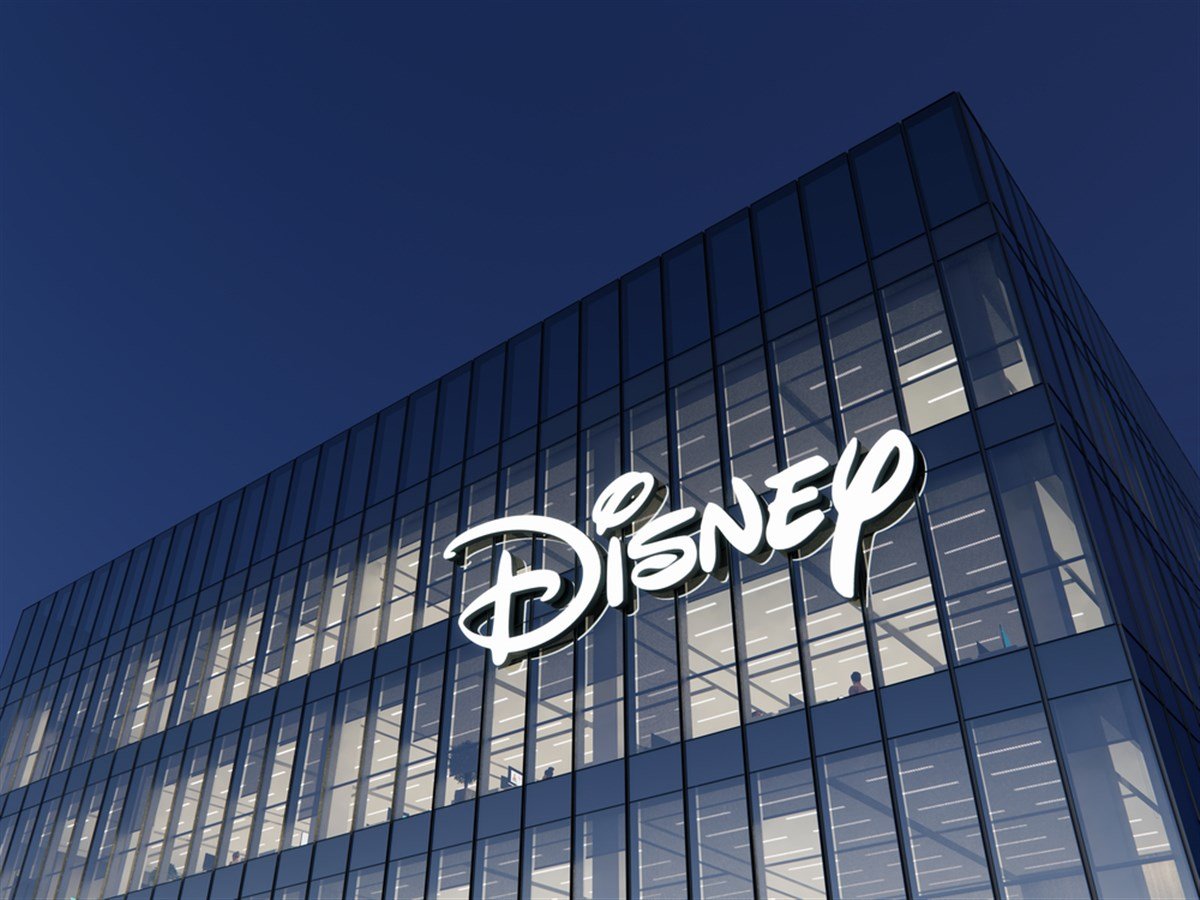
The Walt Disney Company (NYSE: DIS) is an entertainment industry titan and the company has recently experienced a resurgence. With a history of innovation, a diversified business model and a treasure trove of beloved intellectual property, Disney continues to capture imaginations worldwide. The Walt Disney Company operates across a broad spectrum of the entertainment sector. Its core businesses include Media and Entertainment Distribution (encompassing streaming platforms like Disney+, Hulu and ESPN+, along with traditional television networks), Disney Theme Parks, Experiences and Products (resorts and merchandise), Studio Entertainment (film and television production) and Direct-to-Consumer Products (DTC).
This multifaceted structure provides Disney with multiple revenue streams and the ability to cross-promote its content and experiences.
Overview of Disney's Financial Performance
In its most recent earnings report, Disney's financial performance underscores the complexities inherent in a diversified entertainment giant. While the company continues to expand its revenue streams, short-term profitability has been uneven. Disney's earnings report for the first quarter of 2024 presented a mixed and complex picture. Revenues stood at $23.5 billion, comparable to the prior-year quarter.
The comparable revenue signals stability in the company's top-line growth. However, profitability metrics tell a more complex story. Diluted earnings per share (EPS) increased significantly to $1.04, a substantial jump from the $0.70 reported in the prior year quarter. When excluding certain items, diluted EPS increased to $1.22, exceeding the $0.99 from last year's period. This improvement highlights the underlying strength of Disney's core operations.
These positive earnings results are partially attributable to Disney's ongoing cost-cutting initiatives. The company achieved over $500 million in savings during the first quarter alone, primarily within its selling, general and administrative expenses. Disney remains on target to meet or exceed its goal of $7.5 billion in annualized savings by the end of fiscal 2024, a move that bodes well for future profitability.
However, it's important to note that the costs associated with expansion continue to impact the bottom line. Disney+, while experiencing rapid subscriber growth, remains in an investment-heavy phase. Additionally, development projects within the Parks, Experiences and Products segment, such as the Anaheim resort's ongoing $1.9 billion transformation, require significant capital expenditure.
Despite these short-term pressures, Disney’s analyst community remains bullish about Disney's long-term earnings trajectory. Disney projects a minimum of 20% growth in its fiscal year 2024 EPS (excluding certain items), reaching approximately $4.60. The bullish revenue prediction and the fact that streaming services will attain profitability by the conclusion of fiscal year 2024 bolsters a positive outlook.
Disney's Position in the Entertainment Industry
Disney occupies a substantial portion of the entertainment market, offering the ability to provide an entertainment industry analysis alongside insights into the company's competitive landscape. However, precisely gauging its dominance poses a challenge, given the variety of segments in which it operates.
In the streaming space, Disney+ has rapidly gained ground but still trails behind Netflix (NASDAQ: NFLX) in terms of overall subscribers. Disney remains a global leader within the theme park sector, though it faces regional competition from players like Universal Studios (NYSE: UVV), Warner Brothers Discovery (NASDAQ: WBD) and others.
Disney+ vs. Netflix
The ongoing battle between Disney+ and Netflix represents a significant shift in the entertainment sector. As the leading innovator in large-scale streaming services, Netflix has an advantage due to its early entry into the market. This translates into a larger subscriber base and a vast library of content designed to appeal to a wide range of demographics.
Disney+, however, has entered the market with a strategically distinct approach. It leverages its unparalleled brand recognition, built upon decades of beloved characters and franchises, to attract subscribers seeking family-friendly entertainment. Furthermore, Disney+ offers exclusive original content based on its treasure trove of intellectual property, including the Marvel and Star Wars universes. This emphasis on exclusivity provides a strong incentive for fans of these franchises to subscribe.
Additionally, Disney strategically bundles Disney+ with its other offerings, such as Hulu and ESPN+, creating a broader entertainment package. It even integrates the streaming service with benefits like discounts at its theme parks, further strengthening the value proposition for consumers.
Disney Parks vs. Warner Bros. & Universal Studios
Disney's Parks, Experiences and Products segment is a cornerstone of the company's business, with its theme parks generating significant revenue. However, Disney faces strong regional competition from players like Warner Bros. and Universal Studios. Each park operator leverages its unique strengths to attract visitors.
Disney's parks benefit from the company's unparalleled brand recognition and decades-long immersive storytelling emphasis. Their parks offer meticulously themed environments, captivating rides based on beloved franchises and memorable character interactions. Competitors like Warner Bros. and Universal Studios strategically leverage their intellectual property to create unique and thrilling attractions. For example, the Harry Potter-themed areas at Universal Studios parks have proven to be major draws for fans of the franchise.
In terms of strategic focus, Disney has historically placed a strong emphasis on expansion and the creation of new experiences. This is exemplified by the ongoing, multi-year transformation of its flagship Anaheim resort, which includes new attractions, hotels and themed areas. In contrast, competitors like Warner Bros. and Universal Studios may focus more on maximizing the value and appeal of their existing locations by introducing new rides within established parks.
Historical Stock Performance and Key Milestones
Over the past five years, Disney stock trends have demonstrated a complex trajectory marked by significant growth and volatility periods. These fluctuations reflect the impact of the company's strategic initiatives, shifts in leadership and the broader trends shaping the entertainment sector.
Firstly, let's consider price trends. While Disney's stock reached an all-time high of $201.91 in March 2021, it has since experienced both gains and declines. Its 52-week range, with a low of $78.73 and a high of $123.74, highlights a degree of price volatility within the past year. However, it's important to note that recent performance figures have been overwhelmingly positive. Disney's stock has shown substantial increases over 3-month, 6-month and year-to-date periods, suggesting a bullish trend.
Secondly, major corporate actions have played a significant role in shaping Disney's stock performance. The acquisition of 21st Century Fox in 2019 stands out as a pivotal moment. This move vastly expanded Disney's content library and paved the way for developing multiple streaming platforms, including Disney+, Hulu, and ESPN+. These streaming services have become critical drivers of growth and potential revenue sources for the company. Additionally, changes in company leadership have naturally influenced investor sentiment. For instance, the return of Bob Iger as CEO in 2022 was a development closely analyzed by market watchers.
Finally, it's crucial to acknowledge that Disney's stock, like that of any major corporation, is subject to external forces. These include broader economic conditions, such as interest rates or the potential for recession and industry-specific trends within the entertainment sector. The COVID-19 pandemic, resulting in theme park closures and disruptions to film production, had a notable short-term impact on Disney's stock price. However, Disney's recent performance suggests resilience and an ability to adapt to changing market conditions.
Economic and Industry-Specific Influences on Disney Stock
When analyzing Disney stock's performance, it's crucial to consider the company's position within the dynamic and interconnected sectors it inhabits. Disney's financial performance is substantially influenced by two vital forces: macroeconomic trends and the unique dynamics of the entertainment sector.
The Impact of Global Economic Conditions
Like any major corporation, Disney is susceptible to fluctuations in the global economy. Economic downturns, particularly recessions, often lead to reduced consumer discretionary spending, which can directly impact Disney in several ways. Theme park attendance might decline as families tighten budgets, leading to lower revenues. Box office sales on Disney films also often decrease as discretionary spending on entertainment falls. Furthermore, Disney's streaming services' growth might slow down if consumers become more selective about their subscriptions during periods of financial uncertainty.
Changes in interest rates can influence Disney's financial strategy and overall profitability. When interest rates rise, the cost of borrowing capital increases for Disney. This can affect the company's ability to invest in new content creation, expand its theme parks, or pursue acquisitions deemed important for growth. Higher interest rates can also impact consumer behavior, making vacations and streaming subscriptions less affordable.
Inflationary pressures add to the challenges Disney faces by eroding consumer purchasing power and increasing Disney's operating costs. Everything from labor expenses to park maintenance becomes more expensive for the company. Disney might need to raise prices for theme park tickets, merchandise, or streaming subscriptions to offset rising costs. However, price increases could lead to a decline in demand if consumers become more price-sensitive in an inflationary environment.
Industry-Specific Trends Shaping Disney's Future
Beyond broad economic conditions, Disney's performance is heavily influenced by trends within the entertainment industry. The streaming landscape has become a battleground, with Disney+ facing fierce competition from established players like Netflix, Amazon Prime Video (a division of Amazon (NASDAQ: AMZN)) and other entrants like Warner Bros. Discovery. To thrive in this environment, Disney must continuously invest in high-quality content creation and ensure its streaming platform remains technologically advanced. This constant need for innovation puts pressure on Disney's profitability. Additionally, as the streaming market reaches saturation, subscriber growth for all platforms will likely slow down, posing a challenge to Disney's long-term growth targets.
Disney's iconic theme parks and resorts are a significant revenue driver. However, their success depends heavily on factors such as a healthy economy that gives consumers the confidence to spend on leisure activities. Competition from other theme park operators, such as Universal Studios, can also draw visitors away from Disney's offerings. Global events that disrupt travel, like pandemics or natural disasters, negatively impact attendance figures. Furthermore, Disney must stay attuned to evolving consumer preferences regarding theme park experiences. Its ongoing efforts to enhance the guest experience through new attractions and technologies require substantial investments, impacting its profit margins in this segment.
Understanding how Disney navigates these economic and industry-specific influences is crucial for investors. By carefully monitoring these trends, investors can gain valuable insights into the potential trajectory of Disney's stock price and make informed investment decisions.
Investor Sentiment and Analyst Opinions on Disney Stock
For a well-rounded Disney stock analysis, it's crucial to consider investor sentiment and analyst opinions. Analysts offer essential Disney investor insights and a valuable perspective on the stock that provides a look into investor sentiment. The current consensus rating for Disney is "Moderate Buy." The consensus price target for Disney is $124.54, representing the average price analysts expect the stock to reach within the next year. Since Disney's current price is below this target, it implies a potential upside of 11.56%.
Individual analyst price targets for Disney show some variation. The high forecast is $145, while the low forecast is $76. This range underscores analysts' differing levels of optimism or pessimism regarding Disney's outlook.
The "Moderate Buy" rating and implied upside suggest that analysts generally view Disney's prospects favorably but perhaps with some reservations. Exploring individual analyst reports to understand the specific factors driving these ratings is crucial. Some analysts might be optimistic about the long-term growth trajectory of Disney+, while others might be more cautious about the pace of recovery in the Parks segment post-pandemic.
Future Projections and Strategic Outlook for Disney Stock
Analysts project the future of Disney stock to have earnings per share (EPS) that could grow at a compound annual growth rate (CAGR) exceeding 10% over the next five years. This projection fuels a bullish outlook but rests upon the successful execution of Disney's strategic outlook. The continued expansion of Disney+, cost management and a rebound in the Parks segment are pivotal to achieving these targets. Of course, risks remain, including the ever-present threat of increased competition in the streaming space.





